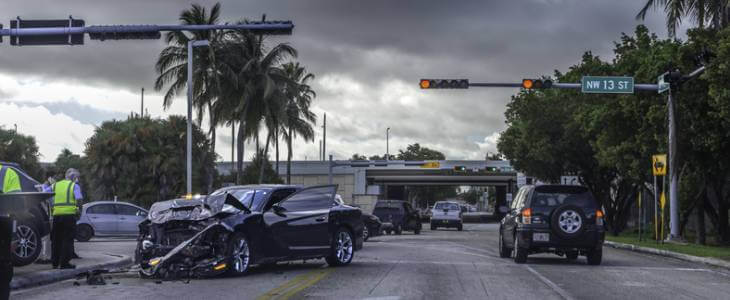Intersection accidents, which can involve vehicles, cyclists, and pedestrians, are among the most common and dangerous types of traffic collisions. Despite advances in traffic management and vehicle safety features, these accidents remain challenging, often resulting from an interplay of the following factors:
- Driver Error: The leading cause of intersection accidents is driver error, which includes: 1) failure to to yield the right-of-way, 2) misjudging another vehicle’s speed or distance, 3) illegal maneuvers, such as running a red light or stop sign, and 4) incorrectly assuming what another driver will do.
- Distracted Driving: Activities that divert attention from driving, such as: 1) texting or using a phone, 2) eating or drinking, and 3) using in-car systems like navigation or entertainment.
- Speeding: Excessive speed can reduce a driver’s ability to stop or react in time to avoid a collision.
- Impaired Driving: Driving under the influence of alcohol, drugs, or medication can impair judgment, coordination, and reaction times.
- Weather Conditions: Poor weather can reduce visibility and make roads slippery, which can lead to drivers losing control at intersections.
- Traffic Flow Issues: Poorly designed or overly complex intersections can confuse drivers or create points of congestion and conflict.
- Inadequate Signage or Signal Timing: Lack of proper signs or poorly timed traffic signals can contribute to collisions.
- Road Conditions: Potholes, uneven road surfaces, or debris can cause drivers to lose control of their vehicles.
- Visibility Issues: Obstructions like overgrown vegetation or poorly placed billboards can hide signs and signals or block a driver’s view of oncoming traffic.
- Turning Across Lanes: Accidents often occur when drivers make left-hand turns across oncoming traffic, sometimes misjudging the speed of oncoming vehicles or not seeing them at all.
- Aggressive Driving: Behaviors such as tailgating, weaving through traffic, or not respecting traffic signs can lead to accidents at intersections.
- Pedestrian and Bicycle Interactions: Intersections can be particularly dangerous for pedestrians and cyclists, who may be struck by turning vehicles or when drivers fail to yield. Sometimes the cyclists are the ones who cause the accident if they fail to adhere to the bike lanes designated for them in metropolitan areas. For example, New York City faces mounting problems from cyclists making food deliveries throughout the city.
- Vehicle Malfunctions: Brake failures, steering problems, or other mechanical issues can lead to intersection crashes if a vehicle becomes uncontrollable.
- Lack of Experience: Inexperienced drivers may not be adept at judging gaps in traffic, proper yielding techniques, or the dynamics of a busy intersection.
To mitigate these risks, traffic engineers and city planners can employ a variety of safety measures at intersections, such as installing roundabouts, adding dedicated turning lanes, improving lighting, optimizing signal timing, increasing enforcement of traffic laws, and implementing public awareness campaigns about the dangers of distracted and impaired driving. Despite this though, accidents at intersections remain very common. If you find yourself the victim of an intersection accident, contact Cooper, Schall and Levy for an initial consultation. We will help you determine your rights and remedies as a result of the intersection accident that you were involved in.


